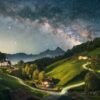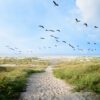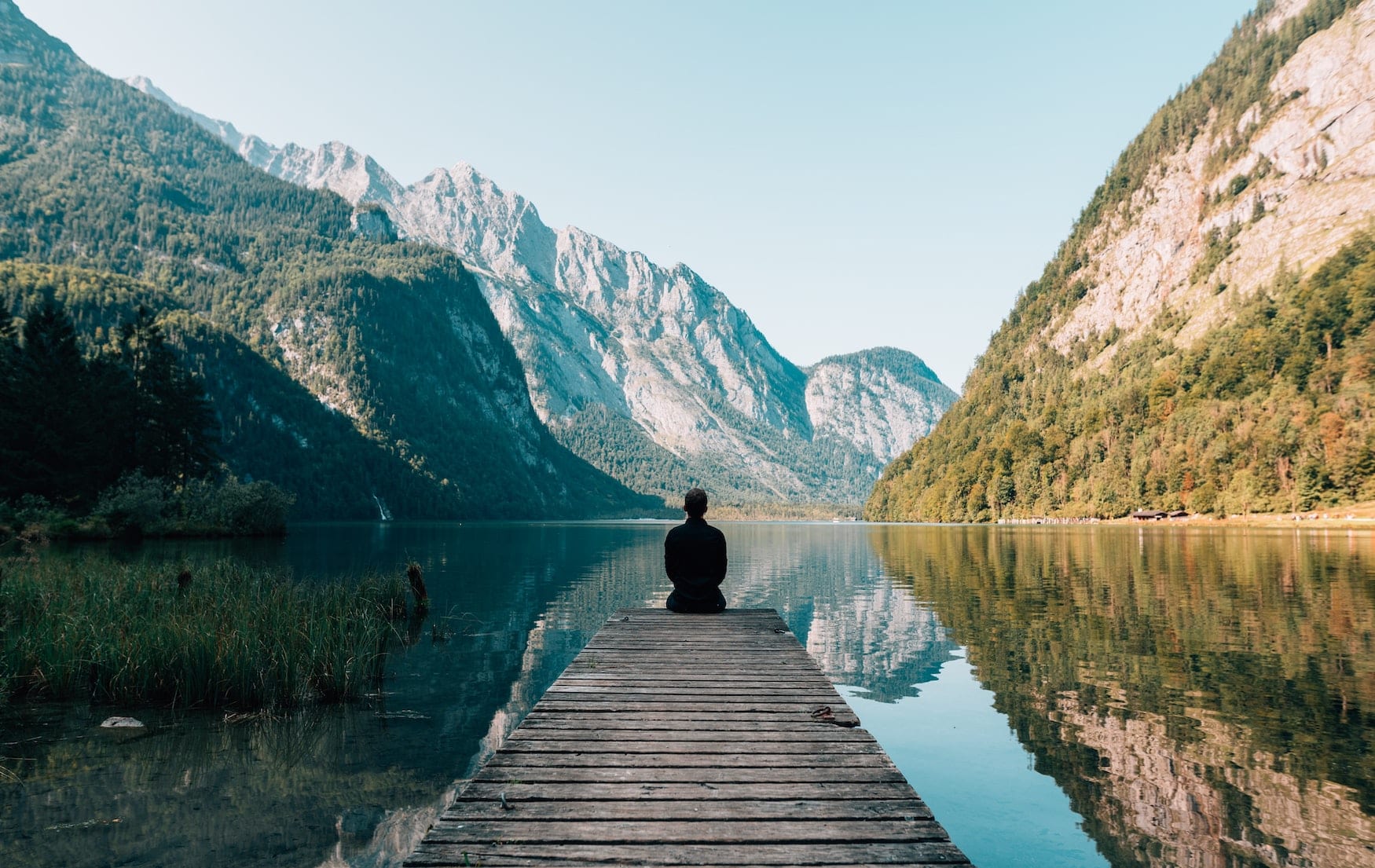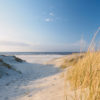Out of the city and into the countryside: nature attractions are particularly popular with travelers. Here are ten nature attractions in Germany you shouldn’t miss.
Whether it’s gorges with thundering masses of water, rugged mountains or sand dunes with sea dwellers – Germany offers many natural spectacles worth seeing, from Sylt in the far north to the Zugspitze on the border with Austria. Some are hopelessly overcrowded; others are lonely gems. Want some inspiration? These are the 10 most popular nature attractions in Germany.
Partnachklamm, Garmisch-Partenkirchen, Bavaria
Steep climbs and beautiful mountains: Garmisch-Partenkirchen has the ideal location for a wide variety of outdoor activities – and is our first tip on our list of natural attractions in Germany. Hiking in this healing climate is a particularly soothing way to experience alpine nature up close, and with around 300 kilometers of hiking trails around Garmisch-Partenkirchen, there’s a route for everyone here.
A highlight of the region is the Partnachklamm gorge in the Reintal valley near Garmisch-Partenkirchen, where the Partnach torrent cut a gorge through the rocks, more than 700 meters long and up to 80 meters wide. Many travelers are fascinated by the “thundering masses of water,” “the rain” that seems to “spring from the rocks,” and the “unique spectacle of light and color”.
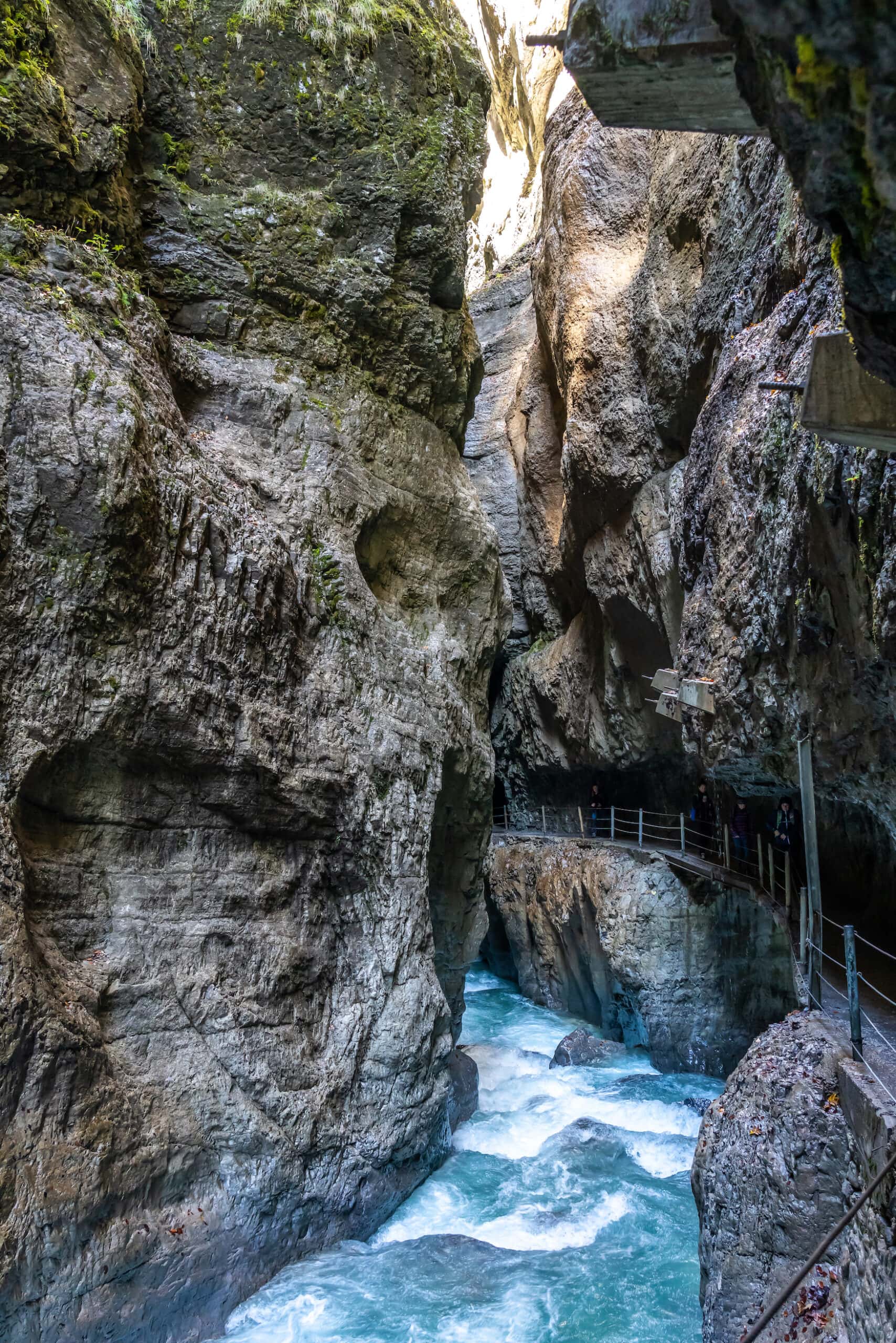
Königssee, Berchtesgaden
This alpine lake is nestled between steep mountain slopes and is therefore often compared to the shape of a fjord. Most of the lake is located in the Berchtesgaden National Park, from where numerous hikes lead you in all directions. Many travelers take a boat trip to the pilgrimage chapel of St. Bartholomä.
In Sankt Bartholomä you can go for a walk or longer hikes. Very good inn with fish from the lake,
writes one user.
More activities in the region: On a day trip from Salzburg to the mountains of Bavaria, travelers get to see Hellbrunn Castle, Obersalzberg and Königssee, where they can take a walk by the lake.
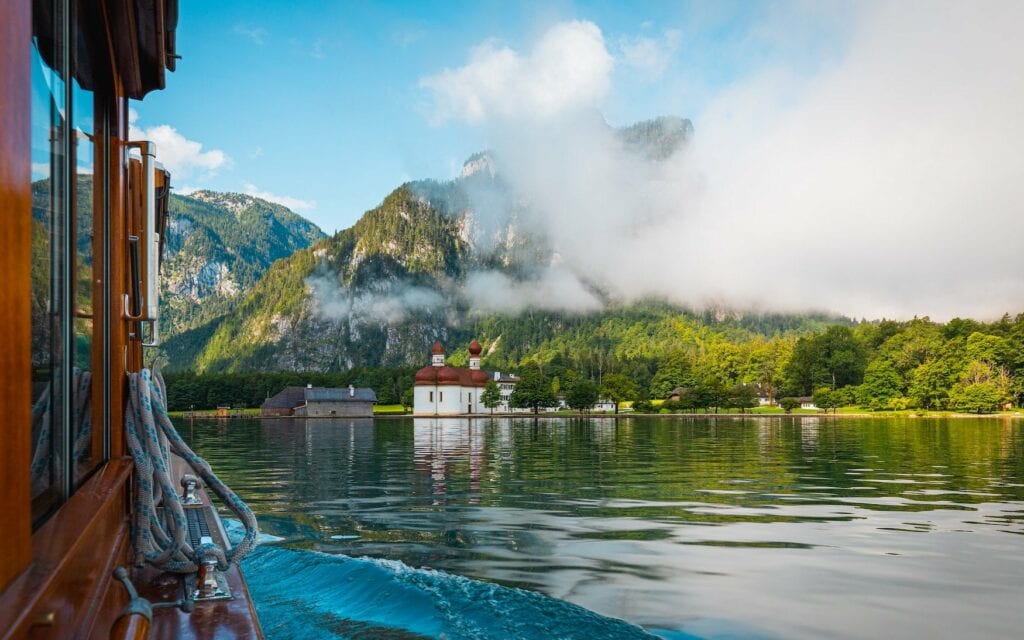
Zugspitze, Garmisch-Partenkirchen, Bavaria
If you are in Garmisch-Partenkirchen anyways, don’t miss out on this beauty: The highest peak of Germany lies at an altitude of 2,962 meters on the border to Austria and, in good weather, opens up “great views in all directions”. You can get to the top of the Zugspitze via various railroads from both sides of the national border or, for hiking fans, on foot – depending on time and effort.
Think of sunglasses and warm clothes! Take the cable car up and the rack railway downhill. Allow enough time.
Tip from a user
Other activities in the region: Travelers on a day trip from Munich can first visit Ettal Monastery, then continue to Lake Eibsee, where the climb or cable car to the Zuspitze starts. Finally, the rack railway takes you back down again. If you are a late riser, you can still start this tour at 10:15 am.
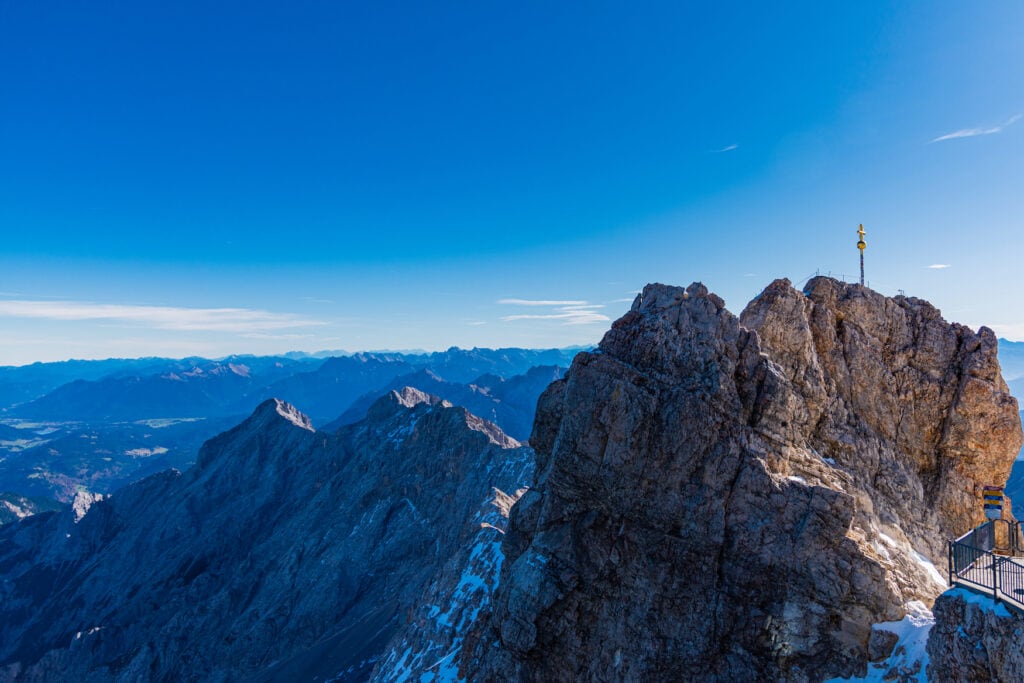
Merkur, Baden-Baden, Baden-Württemberg
Baden-Baden’s local mountain called “Große Staufenberg” is located at an altitude of just under 700 meters in the northern Black Forest. Many users highlight the variety of leisure activities around the mountain, such as hiking, paragliding, tobogganing or mountain biking.
A special experience is a sunset picnic in warm weather.
Tip from one user
Other activities in the region: Travelers can learn more about the Black Forest and the German Wine Route on a day trip from Strasbourg and visit the spa town of Baden-Baden by boot.
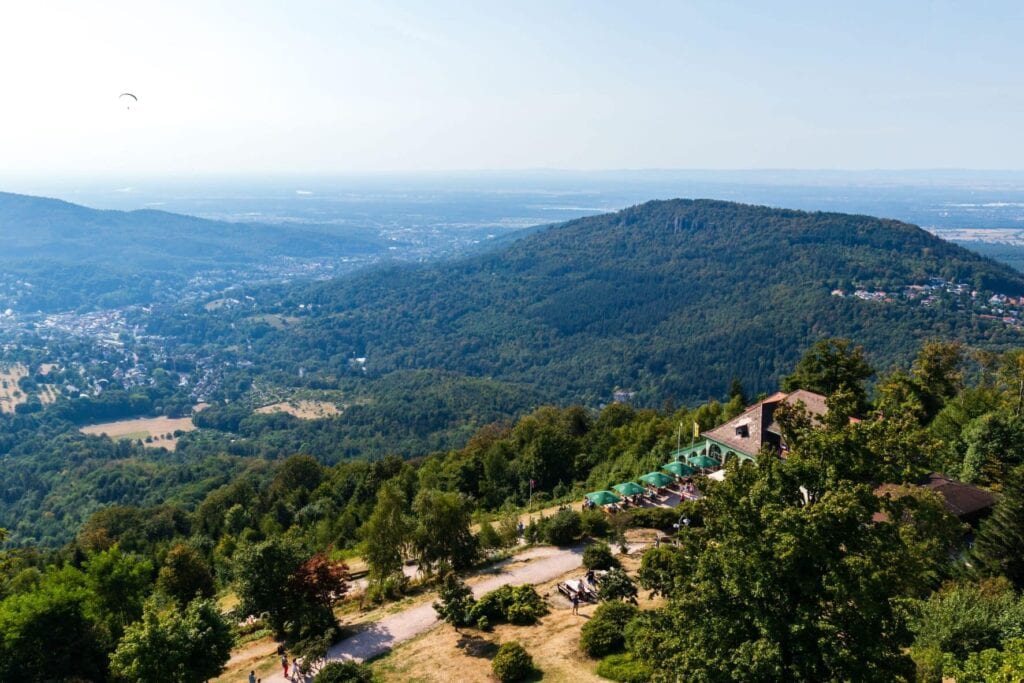
Elbsandsteingebirge, Bad Schandau, Saxony
The Elbe Sandstone Mountains are inextricably linked with European Romanticism. The poetry of the landscape with its peculiar rocks, dense forests, mossy gorges and majestic stream inspired some of the most important painters, musicians and literary figures of the era. The magic of the fairy-tale rocky world still affects visitors today.
Mountains stretch on both sides of the Elbe between the Czech town of Děčín and the Saxon town of Pirna. Not only beautiful, but also ecologically significant in the rugged mountains are the constantly changing plains, gorges, table mountains, giant rocks and wide forests. Cross the mystic gorges by boat and the Elbe valley by paddle steamer. Guides from national park show you around this area full of hidden treasures.
I had honestly underestimated this area. Quite great hikes, diverse and surprising,
said one user on TripAdvisor.
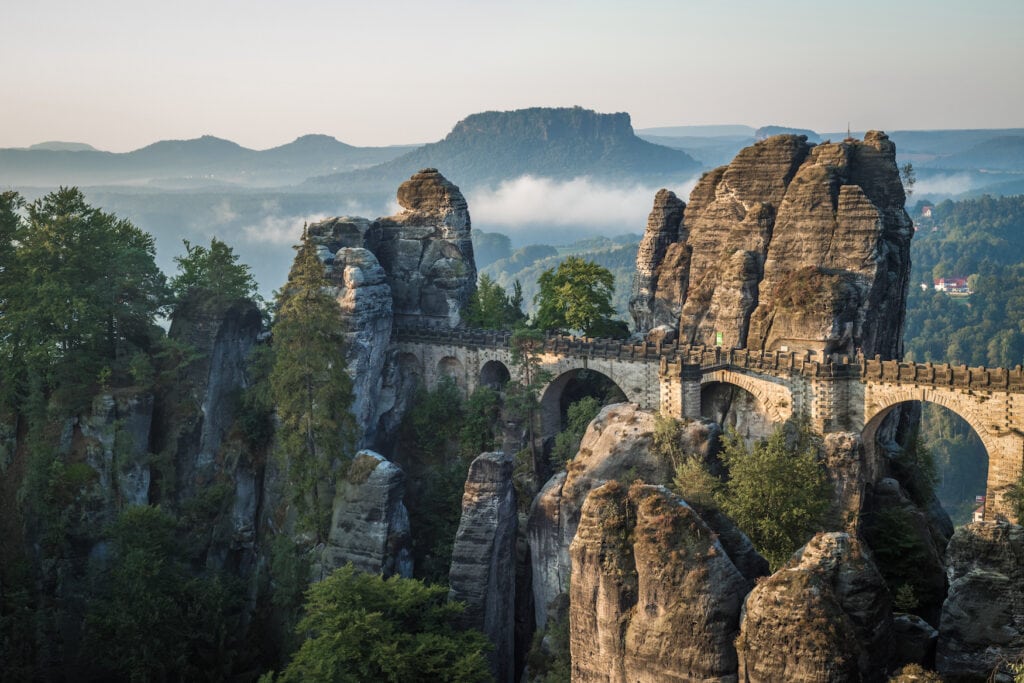
Other activities in the region: Travelers can experience two parks in one on an eight-hour day trip from Dresden, namely the Bohemian Switzerland and Saxon Switzerland national parks, located in Germany and the Czech Republic.
Ellenbogen, Sylt, Schleswig-Holstein
At the northernmost point of Germany on the island of Sylt, you will find this nature reserve with sand dunes and heather and a three-kilometer-long sandy beach. In the warm season, join a guided mudflat walk here or do an individual tour. Tip from a traveler on TripAdvisor suggesting a route: “Wonderful hike from the bus stop on the west beach along the seaside to the elbow and back inland with a view of the town of List, the last kilometers again over the toll road! Good 15 kilometers, up to the arch a good three hours, rest with a view of Romo Island there and some seals in the water! Back again a good two hours.”
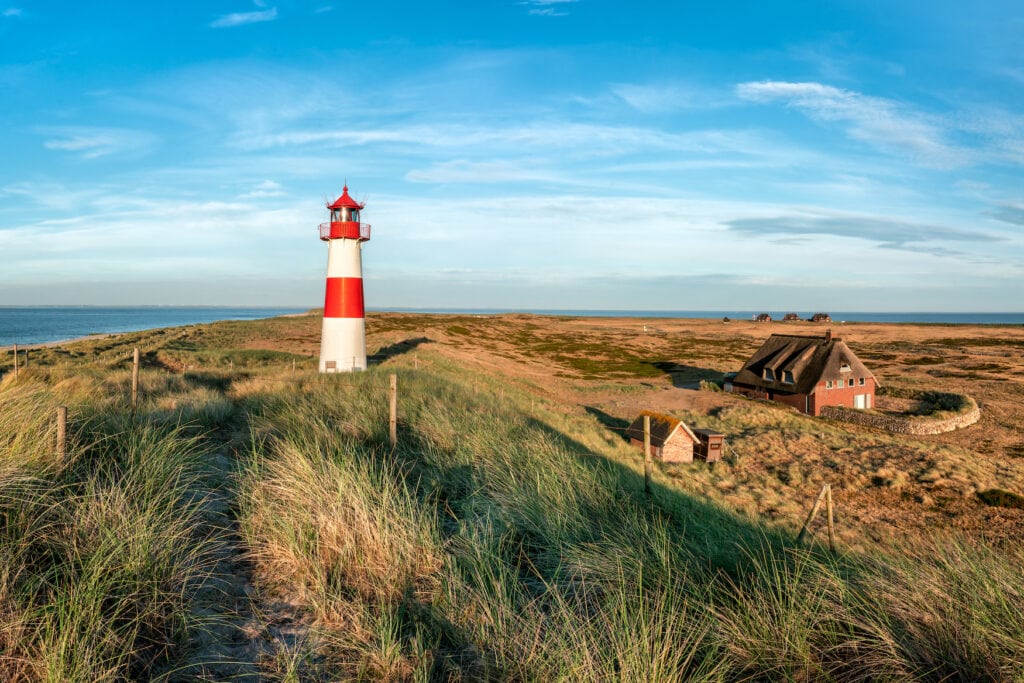
Breitachklamm, Oberstdorf, Bavaria
With a length of 2.5 kilometers and a depth of about 150 meters, the Breitachklamm in the Allgäu is considered the deepest rock gorge in Central Europe. Many visitors mention that a hike is also suitable for children because of the “easily accessible and secured paths along the rock face”.
Tip from a traveler: “Definitely take the entrance via Austria. Then walk down the gorge, this is much better than the other way around. Also, because there is a restaurant at the bottom for refreshments. You can’t put the gorge into words. But ‘indescribable’ fits best.”
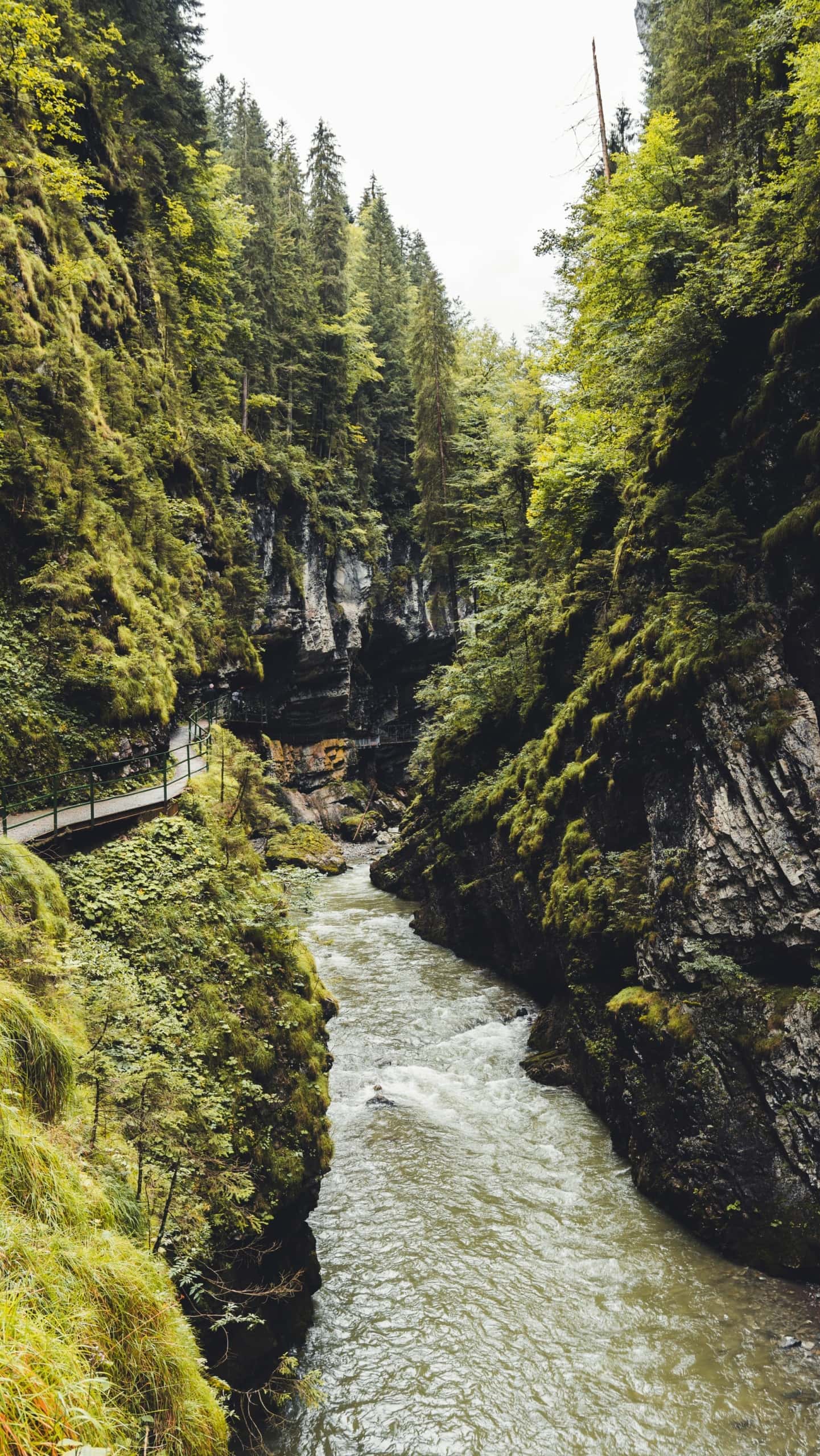
Grey Seals, Helgoland, Schleswig-Holstein
Since the mid-1990s, seals have visited the small sand dune island just before Helgoland regularly, the so-called “Bade Düne” (bathing dune) offers the best conditions for observing the animals. In summer, you can meet both grey seals and harbor seals, often approaching swimmers curiously in the water. In winter, the grey seals and their offspring can be seen breeding on the beach.
Without the grey seals, Helgoland would lose one of its major attractions. Being able to observe the animals up close and take photos is a highlight on the dune,
comments a visitor on the net.
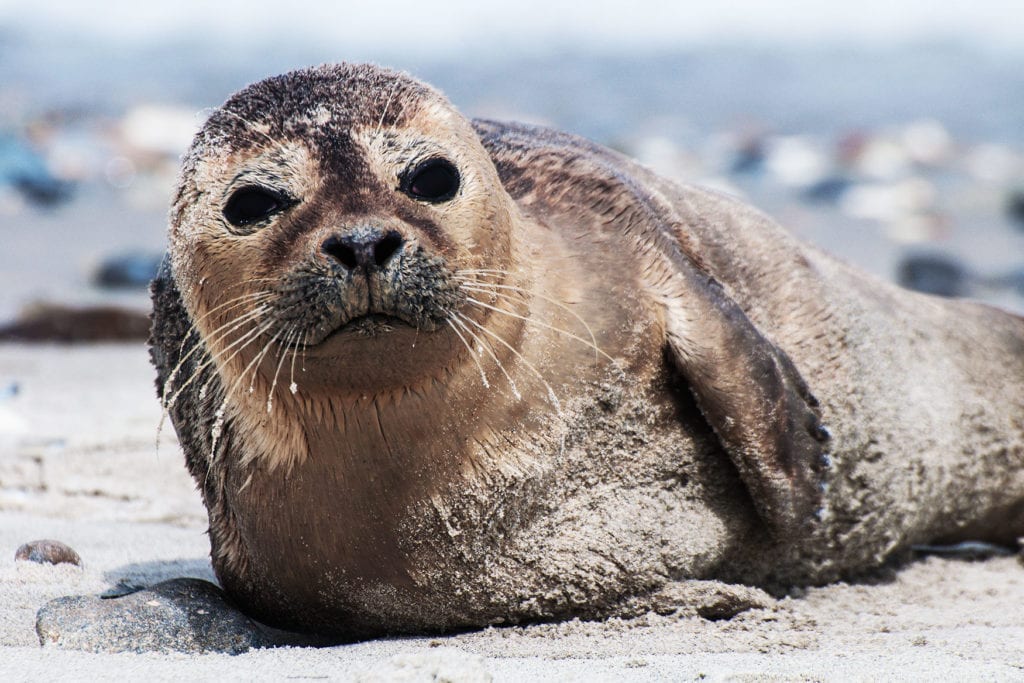
Tegernsee, Miesbach, Bavaria
About 50 kilometers south of Munich, Lake Tegernsee is located in the middle of a protected landscape area in the Bavarian Alps. In the south, there are two larger bays and the small Ringsee island. Many TripAdvisor users like the variety of leisure and gastronomic offers and at the same time the tranquility of the lake.
Romantic parlors with wine and beer. Luxury hotels, apartments and farms. Beach resorts, hiking, surfing, biking and good food. If you’re not happy here, you’re not happy anywhere.
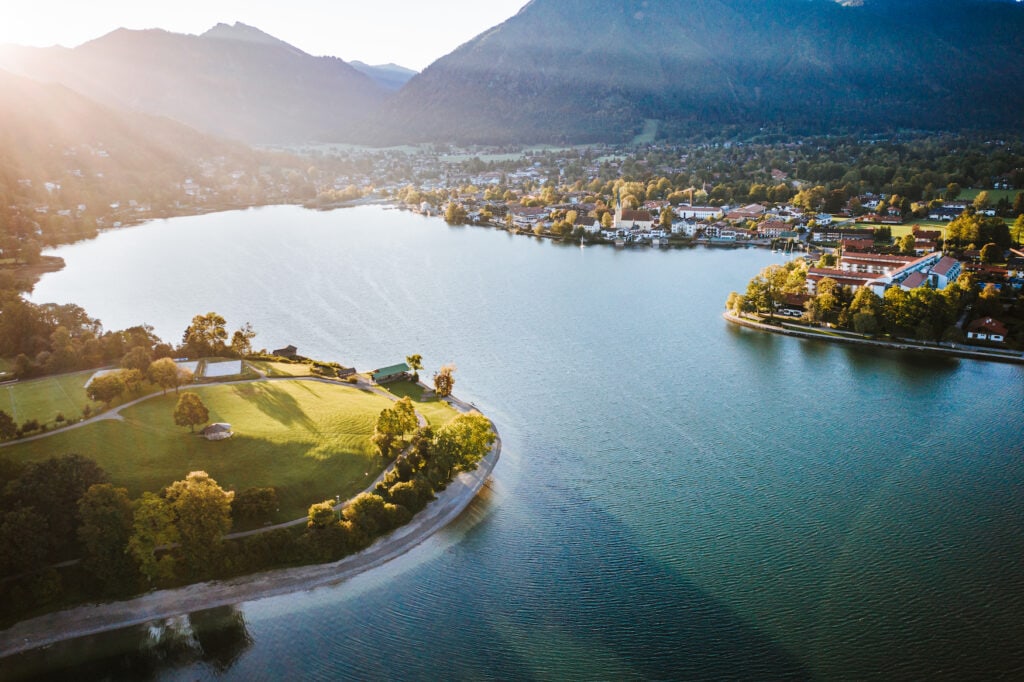
The 32-kilometer panoramic hiking trail along the towns of Tegernsee, Rottach-Egern, Kreuth, Bad Wiessee and Gmund is rewarding. The starting point is the former Benedictine monastery of Tegernsee. From there, the trail leads to the Ludwig-Thoma-Haus in the direction of Rottach-Egern. You’ll pass by the carriage, wagon and sleigh museum and old farms along the forest nature trail before following the course of the Weißach river to the western shore of Lake Tegernsee. On the way back, the route passes more historic farms through the Gasse district of Gmund.
Saarschleife, Mettlach, Saarland
Over millions of years, the Saar River has carved its way through the Taunus quartzite, creating a hilly, green valley that invites for hiking: the Saar Loop. It is the most famous landmark of the state of Saarland. A fairytale walk leads through a path paved with beech, oak and Douglas fir trees. The path continues to wind its way up to the 42-meter-high observation tower, offering a great view over the Saar Loop.
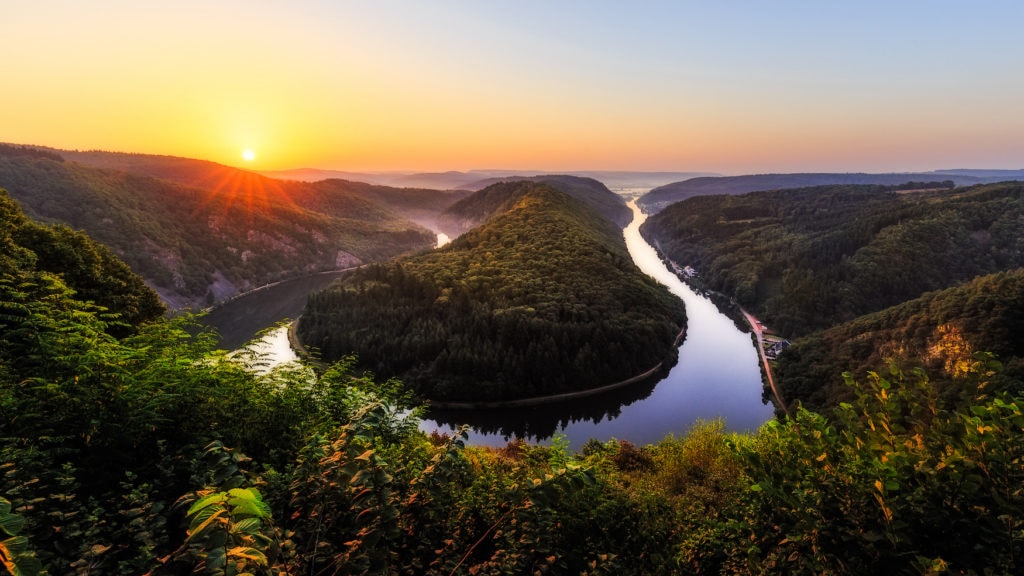
If the weather permits, you can also see the hills of the Saar-Hunsrück Nature Park or even the Vosges mountains in France from here. The treetop trail is easily accessible for everyone. Alternatively, you can hike to the Cloef. It’s another vantage point of the Saar Loop, which is located slightly below the observation tower.
And if you are already in the state of Saarland, you should also visit the district town of Homburg. The mild climate, the fertile soil and the strategically favorable location already attracted the Romans to the Saar. They brought wine to the region, but also left many other traces. You can visit some of them in the Schwarzenacker open-air museum. Also worth seeing are the Schlossberg Caves in Homburg, Europe’s largest man-made red sandstone caves. Mysterious passages through the brightly colored sandstone lead you to twelve floors of fascinating domed halls.
